Options
An Underappreciated Series
 LeeG
Posts: 12,162 ✭
LeeG
Posts: 12,162 ✭
I believe that Classic Commemoratives are at the top of the list. Overall small mintage numbers, famous designers, and a series with real history. Can anyone think of a series that is less appreciated that has these aspects going for it?
From Mike Printz at Larry Whitlow:
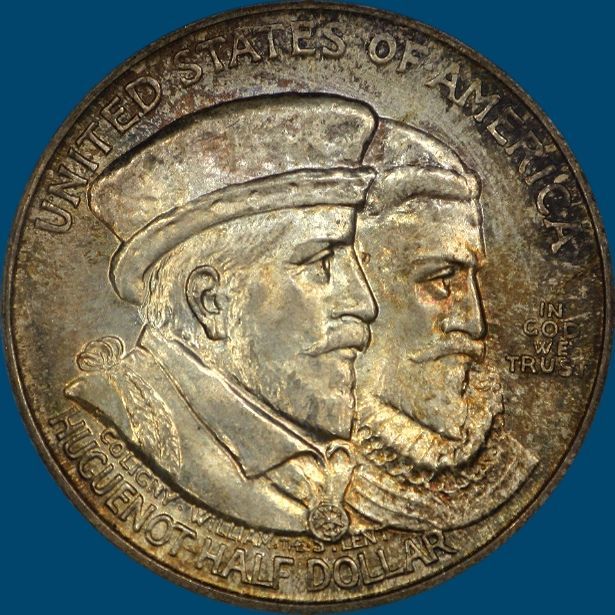
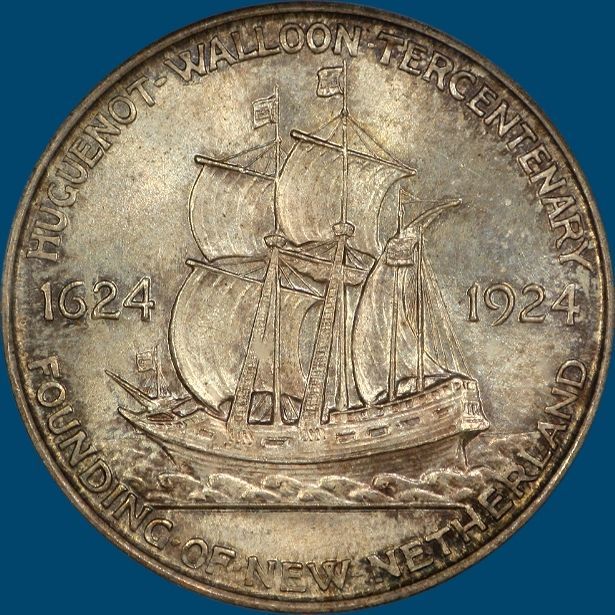
PCGS MS65 (CAC)
The Huguenot-Wallon Tercentenary Half Dollar:
What the heck is a Huguenot Wallon?
The Huguenots were French Protestants who followed the teachings of John Calvin. The Walloons were the same group of people who immigrated to the
south of Belgium to escape persecution from the French Catholics, and the persecution of the Spanish Catholics who ruled Holland at that time. These
Calvinists sought the freedom to practice there religion in the New World, as did many groups throughout Europe. The newly formed Dutch West India
Company saw this as an opportunity to establish colonies in the region called New Netherlands, and convinced 30 families (110 people) to sail to the New World on the ship, Nieuw Nederlandt, and inhabit two settlements. The first was in New Amsterdam (New York City), and the second at Fort Orange
(Albany, NY). This is the group of settlers, as the story tells us, who bought Manhattan Island from the Native American Indians for a chest full of
trinkets worth about 24 Lyon Dollars.
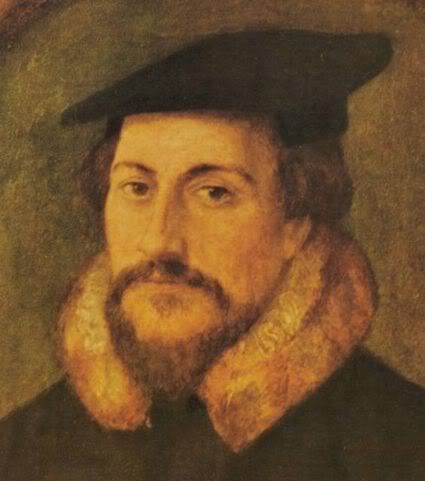
John Calvin
Upon the three-hundredth anniversary of the founding of New Netherland, a souvenir half-dollar was authorized by the 67th congress. It is notable that the Act authorizes a coinage to commemorate an event, whereas the coin portrays persons only indirectly associated with the occasion.
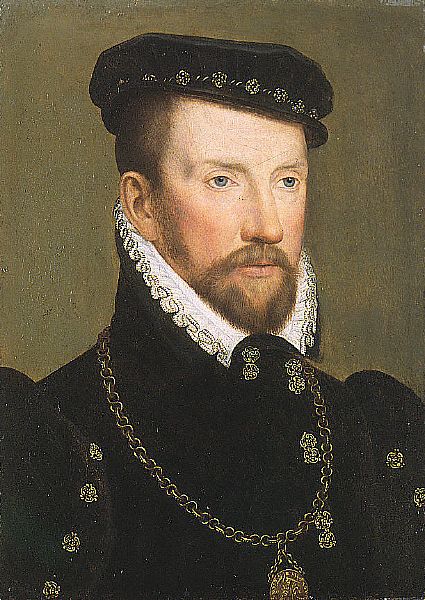
Admiral Gaspard Coligny
The persons whose portraits are shown upon this issue are worthy of a brief historical note. Both Admiral Gaspard Coligny and William the Silent were Protestant leaders of the Reformation, during the latter part of the 16th Century. Coligny was killed in 1572, and Prince William was assassinated in 1584. Their relationship to the founding of New Netherland in 1624, nearly a half century later is a spiritual rather than a factual one.
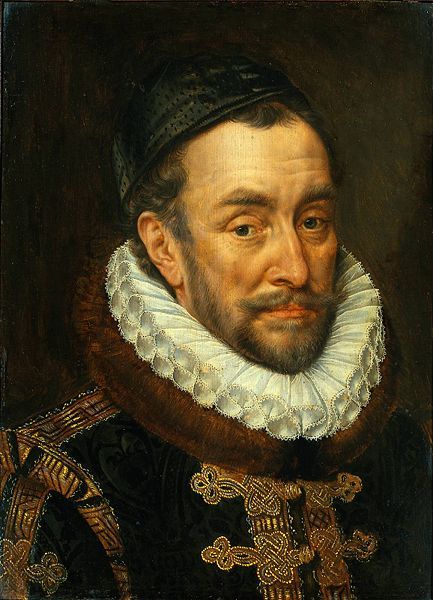
William the Silent
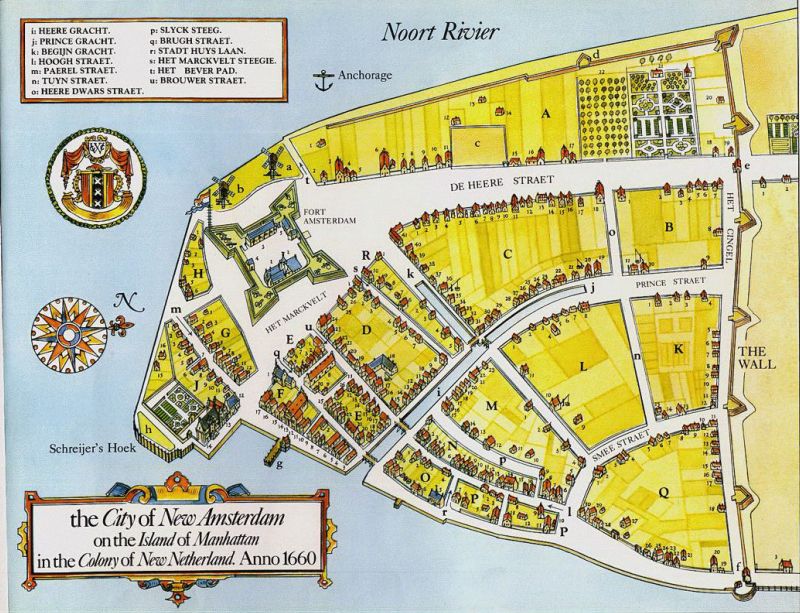
From Mike Printz at Larry Whitlow:


PCGS MS65 (CAC)
The Huguenot-Wallon Tercentenary Half Dollar:
What the heck is a Huguenot Wallon?
The Huguenots were French Protestants who followed the teachings of John Calvin. The Walloons were the same group of people who immigrated to the
south of Belgium to escape persecution from the French Catholics, and the persecution of the Spanish Catholics who ruled Holland at that time. These
Calvinists sought the freedom to practice there religion in the New World, as did many groups throughout Europe. The newly formed Dutch West India
Company saw this as an opportunity to establish colonies in the region called New Netherlands, and convinced 30 families (110 people) to sail to the New World on the ship, Nieuw Nederlandt, and inhabit two settlements. The first was in New Amsterdam (New York City), and the second at Fort Orange
(Albany, NY). This is the group of settlers, as the story tells us, who bought Manhattan Island from the Native American Indians for a chest full of
trinkets worth about 24 Lyon Dollars.

John Calvin
Upon the three-hundredth anniversary of the founding of New Netherland, a souvenir half-dollar was authorized by the 67th congress. It is notable that the Act authorizes a coinage to commemorate an event, whereas the coin portrays persons only indirectly associated with the occasion.

Admiral Gaspard Coligny
The persons whose portraits are shown upon this issue are worthy of a brief historical note. Both Admiral Gaspard Coligny and William the Silent were Protestant leaders of the Reformation, during the latter part of the 16th Century. Coligny was killed in 1572, and Prince William was assassinated in 1584. Their relationship to the founding of New Netherland in 1624, nearly a half century later is a spiritual rather than a factual one.

William the Silent

0
Comments
I like the design of the coin, and appreciate the background info. on the persons depicted.
Nice pics, and a beautiful piece
"Got a flaming heart, can't get my fill"
However, the classic commens still don't really appeal to me. Most of them were produced with political and profit motives behind them, and I don't really consider them regular coinage. However, there are some really beautiful pieces around that were carefully preserved and have acquired fanastic toning, and some designs, like the Oregon Trail pieces, are truly classic.
As an alternative under appreciated series, I offer up the middle date large cents. Maybe not low mintage, but low survival rates in upper grades. Prices are cheap compared to their older brothers. Designers - Scot, Kneass, and Gobrecht - what's not to like there? Albeit the Scot design covers most of the years. History - I'll let the buffs fill that in.
And yes, the classic commeratives are presently underappreciated, but it was not so many decades ago when they were one of the most popular. All coin series rise and fall in popularity, we have seen this happen over and over.
zap
102 capped bust half dollars - 100 die marriages
BHNC #198
quarter.
Nice info.
I was born in Manhattan, and lived and worked there in my 20's, downtown, in the same area my father spent 40 years practicing law. So I love all things Manhattan, even the drink! The map is very cool, as is the commem!
The history is always interesting. I appreciate the work you do pulling it all together.
Lance.
I knew right away
what series you were talking about.
I refuse to lose any interest.
regards from
Experience the World through Numismatics...it's more than you can imagine.
Coin's for sale/trade.
Tom Pilitowski
US Rare Coin Investments
800-624-1870
66*
Fellas, leave the tight pants to the ladies. If I can count the coins in your pockets you better use them to call a tailor. Stay thirsty my friends......
It seems to me that the "real history" of commems is all about 20th century numismatics. So if it's the story of the Hugenots that intrigues you, I'd suggest that you get a handful of 17th century coins and medals that you think best illustrate the story.
Doggedly collecting coins of the Central American Republic.
Visit the Society of US Pattern Collectors at USPatterns.com.
U.S. Type Set
Struck at the Philadelphia Mint during February and April, 1924, from Models prepared by G. T. Morgan. There was considerable agitation concerning this issue. Some desired its suppression feeling that it was solely a vehicle for religious propaganda and, as such, un-American and unsuitable for the national coinage. The bill for this issue of souvenir coins, included, as sponsors, several religious leaders-the first instance in which religious groups had actively participated in an issue of coins.
Since the occasion for the coinage was the settling of the Huguenots and Wallons in the New World, it was contended that American events associated with the settling could have supplied the types for the coinage.
<< <i>It seems to me that the "real history" of commems is all about 20th century numismatics. So if it's the story of the Hugenots that intrigues you, I'd suggest that you get a handful of 17th century coins and medals that you think best illustrate the story. >>
When I say real history my meaning is that Commemorative Coins differ from the regular issues of the year because by authorization of Congress they are permitted to bear special designs and are not distributed by government agencies. Thus, being special designs, they all have a unique story to tell and for the most part, are based on a piece of history.
Gregorius XIII - Pont. Max. An. I Ugonottorum Strages (Huguenots Slaughtered) - 1572
Pope Gregory XIII, with the dragon of Satan as his heraldic symbol, was also the pope who upon hearing of the wholesale slaughter of Protestant French Huguenots, known as St. Bartholomew's massacre, had a medal struck to celebrate the bloody event. The reverse side of the medal depicts an angel with a cross and sword murdering the Huguenot heretics.
Painting by François Dubois, a Huguenot painter born circa 1529 in Amiens, who settled in Switzerland. Although Dubois did not witness the massacre, he depicts Coligny's body hanging out of a window at the rear to the right. To the left rear, Catherine de' Medici is shown emerging from the Louvre to inspect a heap of bodies.
The St. Bartholomew's Day massacre (Massacre de la Saint-Barthélemy in French) in 1572 was a targeted group of assassinations, followed by a wave of Roman Catholic mob violence, both directed against the Huguenots (French Calvinist Protestants), during the French Wars of Religion. Traditionally believed to have been instigated by Catherine de' Medici, the mother of King Charles IX, the massacre took place six days after the wedding of the king's sister Margaret to the Protestant Henry III of Navarre (the future Henry IV of France). This marriage was an occasion for which many of the most wealthy and prominent Huguenots had gathered in largely Catholic Paris.
The massacre began two days after the attempted assassination of Admiral Gaspard de Coligny, the military and political leader of the Huguenots. Starting on 23 August 1572 (the eve of the feast of Bartholomew the Apostle) with murders on orders of the king of a group of Huguenot leaders including Coligny, the massacres spread throughout Paris. Lasting several weeks, the massacre extended to other urban centres and the countryside. Modern estimates for the number of dead vary widely between 5,000 and 30,000 in total.
The massacre also marked a turning point in the French Wars of Religion. The Huguenot political movement was crippled by the loss of many of its prominent aristocratic leaders, as well as many re-conversions by the rank and file, and those who remained were increasingly radicalized. Though by no means unique, it "was the worst of the century's religious massacres." Throughout Europe, it "printed on Protestant minds the indelible conviction that Catholicism was a bloody and treacherous religion".
Catherine de Medicis
Bill